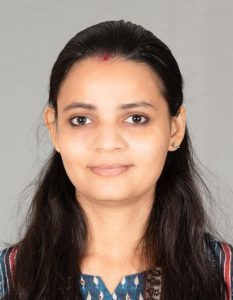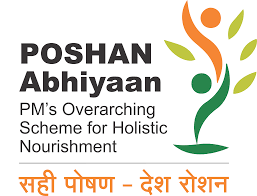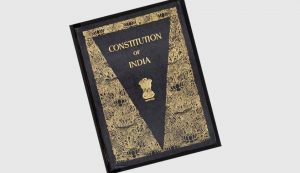
 Professor Satya Narayan Misra & Divya Bharti in Bhubaneswar, March 16, 2024: India is in the dubious company of three countries, Nigeria & Indonesia as the most underperforming countries in the area of stunting, with close to one of globally stunted children (40.6m) living in India. India’s average is 37.9% as against Asian average of 22.7%. There is a rural urban disparity also, with 70% population in rural India having 10.1% higher prevalence in stunting amongst children.
Professor Satya Narayan Misra & Divya Bharti in Bhubaneswar, March 16, 2024: India is in the dubious company of three countries, Nigeria & Indonesia as the most underperforming countries in the area of stunting, with close to one of globally stunted children (40.6m) living in India. India’s average is 37.9% as against Asian average of 22.7%. There is a rural urban disparity also, with 70% population in rural India having 10.1% higher prevalence in stunting amongst children.
Anemia is another pernicious social health issue which affects over 800 million women, with nearly 53% women in the reproductive age group (15-49) (103 M) & 58% children in the age group of (6 month-59 m) (54M) in India afflicted by it as the NFHS 4 Survey. Understandably concerned by these trends, the GOI launched the POSHAN Abhiyaan in 2018 to reduce stunting and anemia at a faster clip by effective use of technology, convergence of different stake holders and fostering a Jan Andolan to rev up awareness and behavioural change.
In April 2018, it also launched Intensive National Iron Plus Initiative (I-NIPI) with a view to ultimately usher in Anemia Mukt Bharat. As against the abysmally small reduction of anemia by 1% per year during (2005-2015), the I NPI initiative sets a target of 3% reduction per year, thereby bringing down total children, boys, and women afflicted by anemia , 298 million in 2016 to 194 million by 2022, a reduction of 100 million.
The primary causes of anemia are iron deficiency and inadequate intake of Vitamin A, folate and Vit B12. Infectious diseases like Malaria, TB further aggravate this problem. The flagship program envisages provision of prophylactic iron folic acid supplementation, deworming, with children being provided IFA syrup bi weekly by Asha workers, and IFA tablets to school children and women.
 Recognising the institutional bottlenecks, the Poshan scheme has units at National, state and district level , national centre for advanced research on anemia control, convergence platform dash based and digital portal to on line communication and effective intervention by concerned stake holders. The average cost per district was assessed as 109 lakhs per year. The GOI has come up with a survey of 22 states & UTs on the trends of stunting and anemia in its NFHS 5 fact sheet in December 2020, which gives us interesting insight of how India has performed in these two critical health sector issues during (2015-2020).
Recognising the institutional bottlenecks, the Poshan scheme has units at National, state and district level , national centre for advanced research on anemia control, convergence platform dash based and digital portal to on line communication and effective intervention by concerned stake holders. The average cost per district was assessed as 109 lakhs per year. The GOI has come up with a survey of 22 states & UTs on the trends of stunting and anemia in its NFHS 5 fact sheet in December 2020, which gives us interesting insight of how India has performed in these two critical health sector issues during (2015-2020).
As regards stunting amongst children, the pace of reduction is very low, ie from 38.9% to 37.9%. In case of anemia among children, it has come down from 58.4% to 53, and for Women in the reproductive age group, it has gone up marginally from 50.3% to 53%, which is most disheartening. For developed states like Gujarat, anemia among children has gone up from 62.6% to 79.4% and for women from 54.9% to 65%!
Even states like Kerala with better HDI record, anemia amongst children has gone up from 35.7 to 39.4, and for women from 34.3 to 36.3. Almost all states show an upward trajectory. The position on stunting of children is equally dismal, with Gujarat showing an increase from 38.5(2015) to 39 (2020) and Kerala showing an increase from 19.7% to 23.4%. NFHS 5 Fact sheet does not cover Odisha. But it has an enviable record of reducing anemia amongst children from 65% (2005) to 44% (2015) and of pregnant women from 68.1% to 47.6% (2005-2015).
With initiatives like Mamta & extremely vibrant Women Self Group Movement, it’s quite likely that Odisha’s record in anemia amongst women would more edifying than business friendly prosperous states like Gujarat. The adolescent girls are signalized by marked physical activity and rapid growth spurt. They need additional nutritional supplement and are at utmost risk of developing nutritional anemia.
 In a perceptive of 283 adolescent girls in Delhi in 2019 Prof Kamble & Gunjan have found out that 65% of girls in the age group of 14-15 years had anemia and the major contributing factors were iron deficient vegetarian diet, underweight, needing deworming. Another study in Uttarakhand of 5776 beneficiaries of I-NIPI program reveals that 53.2% were anaemic, with females having a disproportionate share (54.4%) as against 45.1% for males.
In a perceptive of 283 adolescent girls in Delhi in 2019 Prof Kamble & Gunjan have found out that 65% of girls in the age group of 14-15 years had anemia and the major contributing factors were iron deficient vegetarian diet, underweight, needing deworming. Another study in Uttarakhand of 5776 beneficiaries of I-NIPI program reveals that 53.2% were anaemic, with females having a disproportionate share (54.4%) as against 45.1% for males.
In a brilliantly researched article Prof Saha and Saxena bring out how it is important to note that non iron deficiency can be an important factor, causing anemia as against the conventional wisdom of iron deficiency as the prime cause. In their study, they found that nearly 40% cases were non iron deficiency cases. They therefore sagaciously flag the importance of segregating iron and non-iron deficient anemia in the National Nutrition Mission Target.
Besides adolescent, pregnant and non-pregnant women have unique barriers to Iron Folic Acid use and require tailored intervention, instead of sweeping intervention for all. In case of children crucial period at which iron deficient anemia develops is 6-18 months, when iron requirement is ten times higher by body weight compared with an adult. Food diet in most developed countries is adequate in iron content, as they take more animal food, especially meat and fortified food. In developing countries like India infants depend on iron from breast milk, which is not adequate, in Chile they experimented with milk powder that was fortified with iron, leading to very little iron deficiency. Iron fortified infant food can be a game changer for India.
Prof Kapil Yadav in a perceptive study has brought out how iodine deficiency is a major cause of mental impairment. It is totally preventable by adapting universal salt iodations. Strengthening quality assurance at production facilities in southern states and FSAA making it mandatory iodization of all edible salt will make significant difference. Further non affordable iodized salt is due to supply chain bottlenecks, creating zonal differences in India must be circumvented.
 A large number of Indians subsist on iron poor vegetables due to religious, economic and cultural reasons. Large scale iron supplementation and fortification of commonly consumed vegetable food stuff should be promoted. The Indian constitution at article 47 implores on the state to improve nutrition level in the country, ensure proper maternity care and relief (Art 42) and support Early Childhood care (Art 44) properly. They were no sanctimonious premises by fathers of our constitution on our elected representatives to promote basic nutritional justice for our children, adolescent girls and expecting and nursing mothers.
A large number of Indians subsist on iron poor vegetables due to religious, economic and cultural reasons. Large scale iron supplementation and fortification of commonly consumed vegetable food stuff should be promoted. The Indian constitution at article 47 implores on the state to improve nutrition level in the country, ensure proper maternity care and relief (Art 42) and support Early Childhood care (Art 44) properly. They were no sanctimonious premises by fathers of our constitution on our elected representatives to promote basic nutritional justice for our children, adolescent girls and expecting and nursing mothers.
The vision of anemia Mukt bharat is not sitting comfortably with existential grim realities. It is equally distressing that in the upcoming general election, improvement of nutrition is not being flagged by any political party as an area of priority.


Leave a Reply
Be the First to Comment!